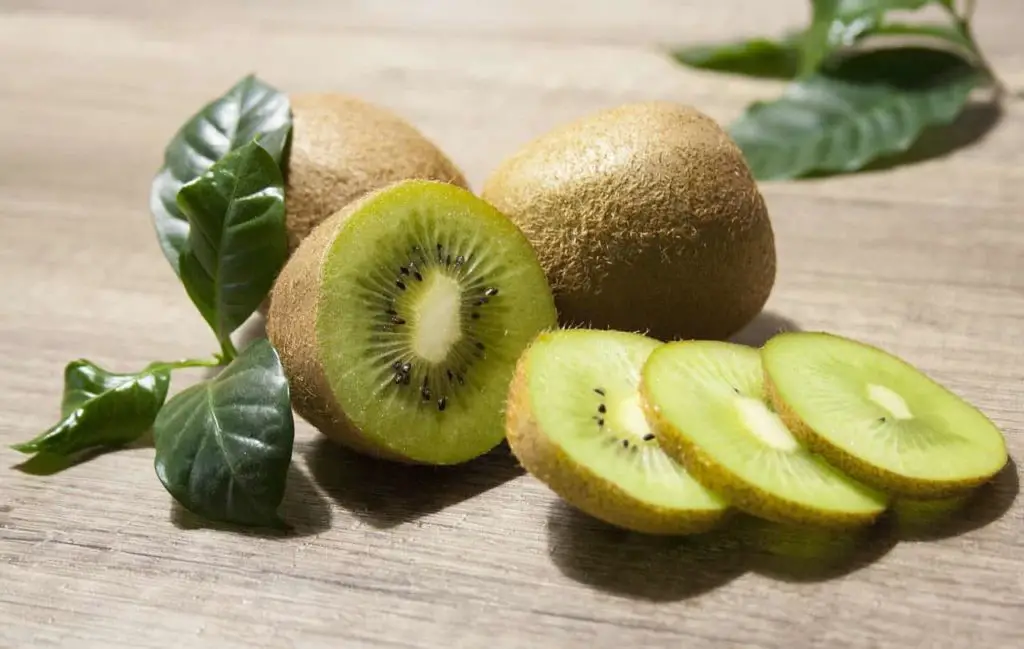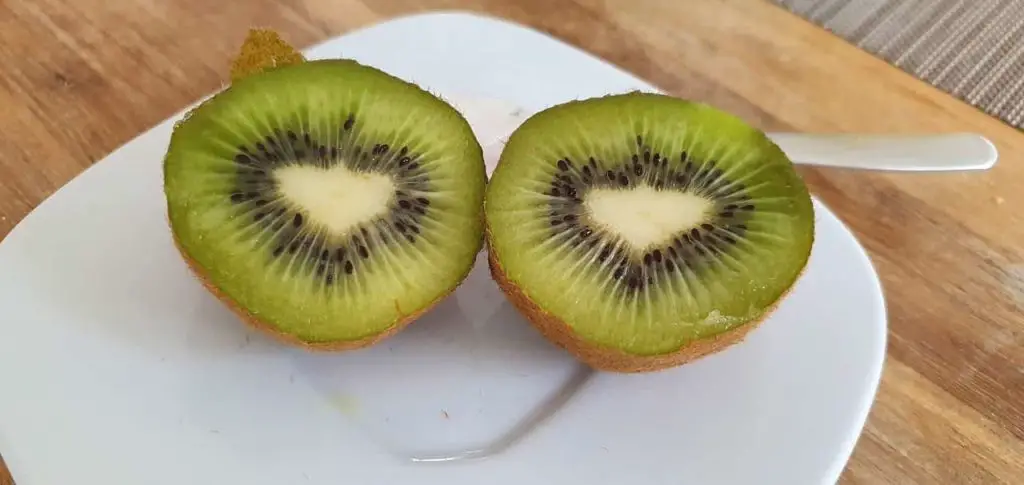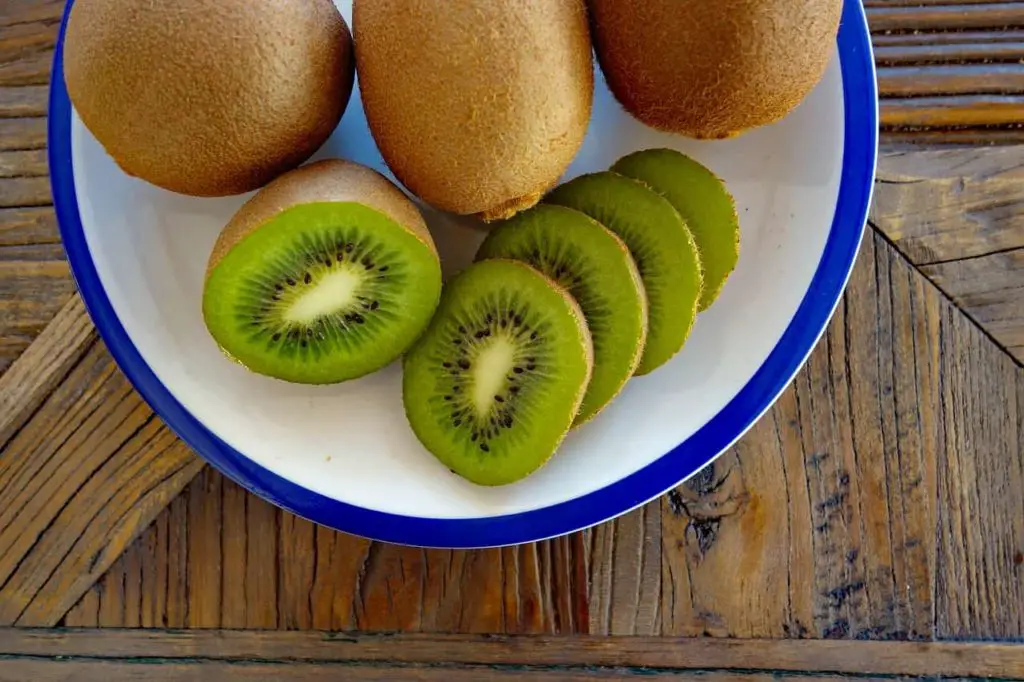Kiwi is often a lot cheaper to buy in bulk, especially if there is an offer on.
But what happens when you run out of ways to use it, and you’re worried that the kiwi will go off before you figure it out?

There are some pros and cons to freezing kiwi, so it’s worth knowing if it makes sense in your situation. Kiwi, as you probably know, has quite a high water content, which makes it tricky to freeze.
You may or may not know that it has a relatively long shelf life in the fridge, but should you freeze it anyway?
Can You Freeze Kiwi, And Is It Worth It?
While putting kiwi in the fridge helps, it won’t be enough if you’re going on holiday, or if you’re prone to forgetting food in the fridge.
Like other fruit with a high water content, such as mango or pineapple, you can tell the difference between a fresh piece of fruit and one that’s been thawed.
The texture is completely different, as the structure of the kiwi has broken down somewhat in the process.
Thawed kiwi is noticeably mushier than its fresh counterpart, even if you only freeze and defrost a few slices, you’ll notice a lot of water in the container.
This also limits you as to what you can use the thawed kiwi in. For example, trying to eat it as it comes, or putting it in a fruit salad will not be an enjoyable experience.
You can sort of mitigate this by straining the excess liquid out, and only using it as a small portion of the salad, rather than it being the main component.
Having said that, thawed kiwi is absolutely fine for cooking, or even blending, where you won’t notice the texture change.
How Do You Freeze Kiwi?
You could peel the kiwi and freeze the whole thing, but this isn’t recommended for several reasons. Space, for example. The fruit also takes noticeably longer to freeze and then defrost.
It also means that the texture will be much worse than if you sliced it first, making it only suitable for blending and cooking. But do you really want to use a whole kiwi?
It’s much easier to freeze kiwi if you dice or slice it beforehand. This also helps with portioning, meaning that you don’t defrost more than you actually need.
You’re also saving space, not to mention helping preserve the texture of the fruit.
While the kiwi will still noticeably turn a little mushy, it won’t be as bad, compared to if you froze the fruit whole.
How To Prepare Kiwi For The Freezer
Peeling and then slicing or dicing the kiwi will only take a few minutes, but these extra minutes will work wonders when it comes to saving the texture of the thawed kiwi.
If you’re planning on using the kiwi in a smoothie, it’s best to dice it into small chunks, especially if your blender tends to clog easily.
Dicing it will also be beneficial if you’re going to use the thawed result in a fruit salad, as the end result won’t be as watery or noticeably mushy.
Once you’ve sliced or diced the kiwi, you’ll want to get a baking tray, and line it with parchment. This will stop the frozen fruit from sticking to the tray.
Put the kiwi onto the tray, making sure to keep them flat, and spaced far enough apart so that they don’t touch each other.
If you want, you can add sugar to the kiwi, and there’s evidence that suggests that sugar helps the fruit keep its quality, but this is up to you.
Put the whole tray into the freezer. You’ll need to wait until the fruit is fully frozen, which will probably take a few hours, depending on how large the individual pieces are.
Once fully frozen, take the baking tray out of the freezer. Transfer the kiwi into a freezer bag or another suitable container.
It doesn’t matter at this stage if the fruit touches. Because you’ve already frozen it, they shouldn’t stick together. Label the container, and stick the kiwi back into the freezer.
But there is another way of freezing kiwi which is worth mentioning.

Using Sugar Syrup To Freeze Kiwi
You can also freeze kiwi in sugar syrup. This will obviously make the end result sweeter, and it does take up more time when it comes to prep, and more room in the freezer.
You’ll need an airtight container – or a few, depending on how much kiwi you need to freeze – sugar, and water.
You can also use some fruit preservatives, but this is unnecessary, and they may be difficult to get hold of.
The first thing you’ll need to do is make the sugar syrup. It’s a simple process. Add 3 cups of sugar for every 4 cups of water, and stir until combined.
You’ll then want to prepare the kiwi. Peel and slice or dice the fruit, and put them into the container. Pour the sugar solution into the container, covering the kiwi, but leaving enough room for the water to expand.
Make sure to completely seal the containers, and label.
When you put it into the freezer, make sure that the containers stay upright, at least until the liquid is fully frozen.
How Do You Defrost Frozen Kiwi?
There’s a few different ways to thaw frozen kiwi, and it depends on your preferences, what you want to use the fruit for, and how much time you have.
Freezer To Fridge
The first way is the universal tried and true method of defrosting most food products. Simply transfer the frozen kiwi into the fridge, and leave overnight to thaw.
Use Cold Water
You can speed up the thawing process by dropping the container into cold water. Water conducts temperature better than air, so it will take roughly a few hours for the kiwi to completely thaw.
Don’t Defrost It
If you’re using the kiwi in smoothies, this is the perfect way. You don’t need to defrost it at all, just chuck it into the blender with the rest of the ingredients, and you’ll end up with a lovely, cold smoothie.
Three Ways To Use Frozen Kiwi
It’s not easy to find frozen kiwi in shops, unless you go down the commercial catering route, and even then, you’ll be lucky to find them.
While you can readily freeze it yourself, why can’t you find it elsewhere? People don’t tend to use it as much as they might use frozen strawberries, for example.
But now that you know how to freeze kiwi to save it for later, let’s look at how you can actually use it.
In Smoothies
The perfect reason to freeze kiwi, besides preserving it for a later date, is to make a great smoothie.
You don’t even need to defrost it, just throw it in the blender with whatever else you fancy, making sure to add a little less liquid than usual, as the kiwi will be quite watery.
As Part Of A Fruit Salad
Notice the title says ‘as part of’. Don’t use thawed kiwis as the main ingredient for a fruit salad, otherwise you’ll end up with a soggy fruit salad, and no one wants that.
Make sure to take the kiwis out of the original container and strain them before you add them to your fruit salad, otherwise it will end up more watery than you’d want.
As Part Of Salsa
You can use thawed kiwi in salsas (see also Freezing Salsa) and sauces. Defrosted kiwi is especially useful in sauces or salsas that need blending, in which case the texture won’t be noticeable.
Kiwi adds some natural sugars to any salsa or sauce, reducing the need to add refined sugar.

Just make sure you strain the kiwi before adding it as an ingredient, otherwise the end product may be more watery than you hoped for.
The Shelf Life Of A Kiwi And Different Ways Of Storing It
It’s useful to know, before you attempt to freeze a kiwi, how long it will actually last when it’s stored in different ways.
This will also help when it comes to deciding what to do with it, especially if you’ve just bought a lot of it fresh.
If you keep a whole kiwi at room temperature, once ripened, it will keep for several days.
If you put a whole kiwi into the fridge, it will last up to a month, provided that it’s already ripe.
It’s worth keeping unripened fruit out until it does mature, and then you can transfer it into the fridge. Otherwise, you may risk the fruit not ripening at all.
If you slice or dice the kiwi, it will not keep a day if you leave it out. If you place it into the fridge as soon as you have cut it up, it will last a maximum of 5 days in the fridge.
So it then makes sense to freeze it, if you’re not going to use it within that window.
